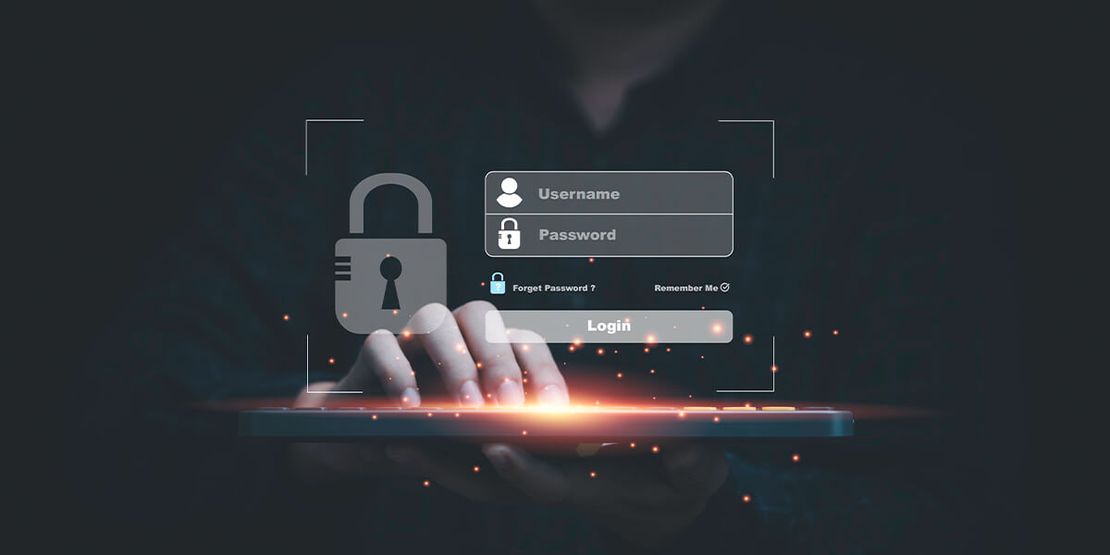
Navigating Passwords: A Comprehensive Guide to Storage and Security
Passwords play a pivotal role in shaping our digital landscape, significantly influencing our online engagement. They can be likened to the digital counterparts of keys, granting access to our virtual spaces - the guardians of our emails, financial transactions, social interactions, and even our professional endeavors.
As we navigate this increasingly interconnected digital realm, passwords stand as sentinels, tirelessly preserving the integrity of our personal and business-related identities in the virtual sphere.
Understanding the complexities of how passwords are stored, grasping the multitude of threats they face, and honing the skill of creating robust passwords stand on a pedestal of utmost importance. This knowledge is the bedrock upon which we fortify our digital presence, creating a secure and impregnable virtual footprint.
By arming ourselves with this knowledge, we confidently empower ourselves to navigate the digital landscape, ensuring our online presence remains secure.
💻 Tech Fact
The most common password in the world is "123456". This password is straightforward to guess, and millions worldwide use it. If you use this password for any of your online accounts, you should change it immediately.
Unveiling the Security Behind Passwords and Storage
In a carefully crafted system, passwords, known as plain text, are not stored in their easily readable form. If stored this way, any security breach could instantly expose every user's password, creating a significant vulnerability. A more secure approach is taken to counter this risk: Passwords are typically transformed into a different representation using a cryptographic hash function (CHF) process. This method converts passwords into a unique sequence of characters, making it challenging for malicious attackers to crack or decode the original passwords. Essentially, this cryptographic transformation acts as a robust defense, adding an extra layer of security to user credentials.
Imagine a hash function as a digital magician that takes an input, such as a secret message or password, and transforms it into a specific type of code, like a secret code that is usually the same length. This magical trick results in a 'digest,' which is like a unique fingerprint for each input. Picture that even the slightest change to the input, such as altering just one letter of your password, makes the magic go haywire, and the resulting code becomes entirely different from the previous one. This magic's complexity is so strong that it is nearly like trying to find a needle in a haystack if you're attempting to figure out the original password based solely on the code. In other words, this hash function creates an almost impenetrable lock for your passwords!
When you enter your password into a login form, you initiate a significant security process beyond the surface level. The system takes the characters you input and subjects them to a series of complex transformations, creating a unique and complex cryptographic code called a hash. This hash is not a simple copy of your password; it's an irreversible representation created using advanced algorithms. Now, here's where the brilliant layer of security comes into play. The system then retrieves the previous hash securely associated with your username. This hash, generated when you initially set up your account, serves as a digital fingerprint of your password without directly revealing it.
The magic unfolds when the system compares the hash you created by entering your password with the hash associated with your username. It's like a digital handshake where the system checks if these two hashes match perfectly. If they align, it's just like confirming that the jigsaw pieces fit seamlessly, and the system recognizes that your input corresponds to the original password. This verification makes it ready to grant you the desired access you seek. The beauty of this process lies in its one-way nature: the original password cannot be deciphered from the hash. This means that even if someone were to intercept the hash, unraveling the actual password from it is a daunting task.
This robust feature adds extra security to your sensitive information, making it significantly more challenging for unauthorized entities to gain access. Storing passwords in hashed form is the gold standard across the industry, showcasing its reliability. However, the realm of security doesn't stop here. An additional layer of protection is often implemented through a technique known as "salting." Think of a "salt" as a unique and randomly generated string added to your password before transforming it into a hash. This clever additional step ensures that even if two users have identical passwords, their resulting hashes will diverge, strengthening the safeguarding of their accounts.
Decoding Common Techniques Used by Hackers
Rainbow Tables
Despite the robust security measures of hashing, cyber attackers have devised clever methods for cracking these hashed codes. One such method involves the use of 'rainbow tables.' A rainbow table serves as a precomputed reference, enabling the decryption of cryptographic hash functions. This method is used to crack password hashes by cross-referencing the hash within the table. If a match is found, the corresponding plaintext is revealed.
However, the effectiveness of rainbow tables is thwarted by implementing salts, which are unique and random additives. As salts introduce a unique element for each hash, creating new rainbow tables becomes labor-intensive, dramatically increasing the resources required for decryption.
Brute Force Attacks
A method rooted in relentless trial and error, brute force attacks are employed by cyber attackers to obtain sensitive information such as user passwords or personal ID numbers (PINs). This method involves using automated software to generate an extensive array of consecutive guesses, each attempting to pinpoint the exact value of the targeted data.
Dictionary Attacks
Within the realm of hacking, dictionary attacks function as a tactical approach where hackers utilize a specific file - appropriately named a 'dictionary' - housing a sequence of commonly used passwords or phrases. Deliberately, these entries are compared against the hashed passwords, capitalizing on the likelihood of success due to users' penchant for predictable password choices.
💻 Tech Trivia
Did you know that the first computer virus was called "Creeper"? It was made by Bob Thomas in 1971, and it spread from computer to computer by copying itself onto floppy disks. Creeper wasn't very harmful but was the first example of a self-replicating computer program.
The Art of Creating a Strong Password
A robust password is a vital barrier, bolstering your initial defense against various prevalent hacking methods. Crafting an effective password involves a combination of length, uniqueness, and complexity. The greater the length and randomness of your chosen password, the more formidable the challenge it presents to potential hackers attempting to crack it.
As a fundamental guideline to adhere to, a well-constructed password should conform to the following principles:
#1 Embrace Length as a Safeguard
Picture your password as a fortress wall - the taller, the better. Spare no fewer than 12 characters in your password creation quest. A lengthier password unveils an immense expanse of potential combinations, turning brute force attacks into daunting quests that even seasoned hackers hesitate to embark upon.
#2 Orchestra of Characters
An orchestra of characters enriches your password composition - orchestrate a harmonious mix of uppercase and lowercase letters interspersed with numerical notes and symbolic twists. This blended ensemble broadens the 'alphabet' of possibilities for hackers, transforming the code-breaking endeavor into a confounding puzzle.
#3 Avoid the Predictable
Shun the expected repositories of dictionary words, personal fragments, and tired patterns that digital marauders eagerly anticipate. Break free from the shackles of '12345678', 'password,' and 'qwerty,' for these feeble fortresses crumble under the weight of hackers' predictability.
#4 Sow Uniqueness Across Digital Soil
As a digital nomad, let not your passwords tread the same well-traveled paths. Cultivate a distinct password for each digital sanctum you inhabit. Should one fortress fall to intrusion, the others remain steadfast, fortresses unbreached.
#5 Rhythm of Renewal
In cybersecurity, you must wear new attire periodically, even with strong passwords. Refresh your defenses by shuffling your password deck at regular intervals. This simple act of renewal limits the window of vulnerability, ensuring your digital bastion remains impregnable.
Understanding Password Managers and Two-Factor Authentication (2FA)
Managing complex and distinct passwords for every website can prove to be a daunting task. Fortunately, this is where the ingenious solution of password managers enters the stage. These smart tools are designed to generate complex passwords on your behalf and securely store them using advanced encryption techniques. The beauty of it all lies in the simplicity of remembering just one master password, granting you access to a treasure trove of secure passwords.
But wait, there's more to fortify your digital stronghold. Alongside the fortress of a strong password, several services contribute to the defense with an additional layer of protection known as two-factor authentication (2FA). This added security dance typically involves an extra step following your password input, often requiring you to enter the code that was sent to your trusted mobile device. This simple step significantly elevates the barriers a potential digital intruder faces. Even if they decipher your password, they must breach the second line of defense to gain access - a formidable obstacle. Your virtual sanctuary remains unshaken, fortified by the synergy of these protective layers.
In our rapidly evolving and interconnected digital landscape, it has become absolutely essential to grasp the inner workings of password storage, the potential threats they face, and the art of creating a strong and secure password. Embracing a regimen of sound password practices is not just a recommendation; it's a bona fide requirement in today's digital realm.
By developing strong password habits, you can markedly reduce the vulnerability of your accounts to unauthorized access, thereby fortifying the safeguarding of your personal data against any improper breaches. In your journey through the digital realm, a formidable password is your initial line of defense, further bolstered by invaluable tools like password managers and the additional security layer of two-factor authentication. Remember, your proactive steps today lay the groundwork for a more secure digital presence tomorrow.
Tech Bear




















